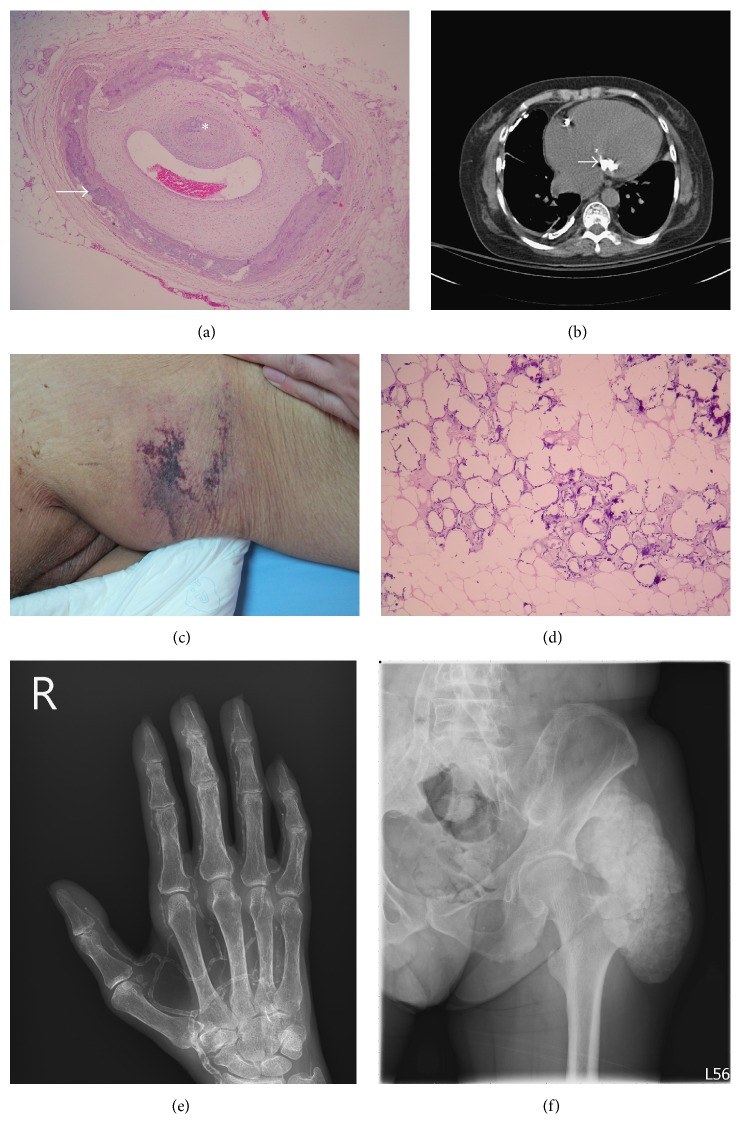Figure 1.
(a) Radial artery of a patient with end-stage renal disease showing intimal (∗) as well as medial calcification (arrow) under hematoxylin and eosin stain. (b) Calcifications can be seen on the mitral valve (arrow) in computed tomography studies. (c) Macroscopic evidence of calciphylaxis, (d) skin biopsy showing fat necrosis, composed of necrotic adipocytes, minimal inflammatory cell infiltration, and extensive calcification under hematoxylin and eosin stain, and (e) right hand radiographic evidence of severe heavy medial calcification of the radial arteries and their branches as shown by the so-called tram track phenomenon were found in a hemodialysis patient with calciphylaxis. (f) Left hip radiographs show a large radiopaque lesion on the soft tissue around the hip joint comprising multiple round calcified masses.

